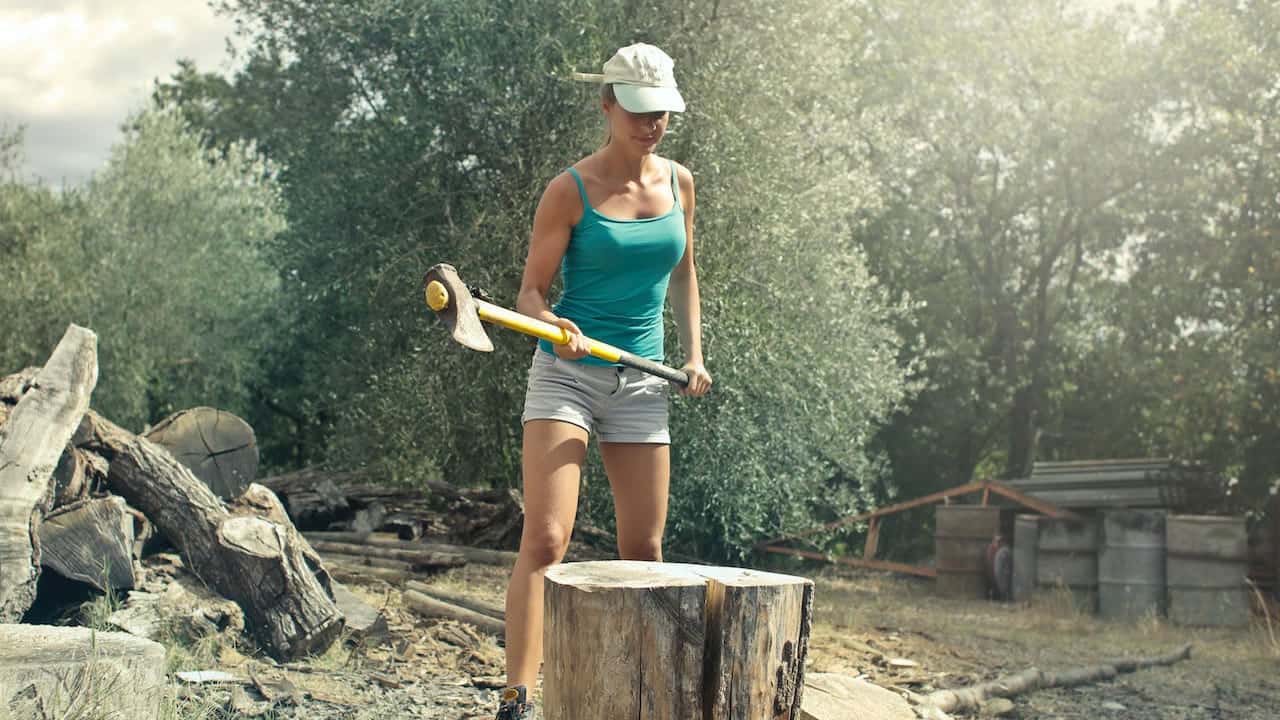An axe is a powerful tool widely used for chopping wood, felling trees, and various other outdoor and homesteading activities. However, its effectiveness is matched by its potential for danger if not used correctly. Safety should always be a top priority when handling an axe. This guide will provide you with essential tips for safely using and storing an axe.
Understanding Axe Safety
Before you start swinging, it’s crucial to understand that axe safety starts with respect for the tool. An axe is not a toy, and proper handling is a must.
Choosing the Right Axe
- Select the Correct Type: Choose an axe that suits your task. A felling axe for cutting down trees and a splitting axe for splitting wood have different designs and balances.
- Weight and Length: Make sure the axe’s weight and handle length are appropriate for your strength and skill level. Handling an overly heavy or long axe can lead to accidents.
Personal Protective Equipment (PPE)
Wearing the right protective gear can significantly reduce the risk of injury.
- Eye Protection: Always wear safety goggles or a face shield to protect your eyes from flying wood chips.
- Gloves: Use gloves to improve grip and protect your hands.
- Footwear: Wear sturdy boots with non-slip soles to protect your feet and improve stability.
Preparing Your Work Area
A safe work environment is crucial when using an axe.
- Clear Space: Ensure you have plenty of room to swing the axe without hitting anything or anyone.
- Stable Ground: Work on a flat, stable surface to avoid slipping.
- Inspect the Area: Remove any obstacles or debris from your swinging and chopping area.
Safe Handling Techniques
Proper technique is not just about effectiveness; it’s about safety.
- Gripping the Axe: Use a firm grip with your dominant hand near the end of the handle. Your other hand should be closer to the head of the axe, sliding down to the end as you swing.
- Stance: Stand with your feet shoulder-width apart, knees slightly bent for stability.
- Swing Technique: When swinging the axe, use your legs and hips to generate power, keeping your back straight. Do not overextend your swing.
The Process of Chopping Wood
- Positioning the Log: Place the log on a chopping block that is knee-height. This position reduces the risk of hitting the ground or your feet.
- Aim and Strike: Aim for the center of the log. When you swing, let the weight of the axe head do most of the work.
- Controlled Swings: Avoid over-swinging. Keep your movements controlled and precise.
When Splitting Wood
- Check the Log: Look for existing cracks and aim your axe there.
- Use a Splitting Block: This provides a stable base and reduces the chance of the axe hitting the ground.
Axe Sharpening and Care
A dull axe is a dangerous axe. It requires more force to use and can lead to uncontrolled swings.
- Regular Sharpening: Keep your axe sharp using a file or whetstone.
- Proper Storage: Store the axe in a dry place to prevent rust.
- Protect the Edge: Use a sheath to cover the axe head when not in use.
Safe Storage of Axes
Proper storage of your axe is as important as safe handling.
- Out of Reach of Children: Store the axe in a place where it’s inaccessible to children.
- Cover the Blade: Always keep the blade covered with a sheath.
- Avoid Moisture and Heat: Store your axe in a cool, dry place away from moisture and direct heat to prevent handle warping and metal corrosion.
Transporting an Axe
When moving an axe from one place to another, exercise caution.
- Carry with the Blade Covered: Always use a sheath.
- Carry the Axe Close to Your Body: Hold the axe with the blade pointing down and the handle along your arm.
- Never Swing an Axe While Walking: This is a common cause of accidents.
Teaching Others to Use an Axe
If you’re showing someone how to use an axe, safety education comes first.
- Demonstrate First: Show the correct technique before letting them try.
- Supervise Closely: Never leave a beginner unsupervised with an axe.
- Start with Basics: Begin with basic chopping and build up to more complex tasks.
Emergency Preparedness
Accidents can happen, even with the best precautions. Be prepared for emergencies.
- First Aid Kit: Always have a first aid kit nearby when using an axe.
- Know Basic First Aid: Learn how to treat cuts and bruises.
- Emergency Contacts: Have a phone nearby to call for help if needed.
Conclusion
Using an axe safely is about understanding the tool, using proper technique, wearing the right protective gear, and maintaining a safe environment. By following these safety tips, you can ensure that your axe-using experience is both effective and safe. Remember, respecting the tool and its power is the first step toward preventing accidents. Stay safe and chop responsibly!
